Rudresh Dwivedi
Deepfake Detection with Optimized Hybrid Model: EAR Biometric Descriptor via Improved RCNN
Mar 16, 2025Abstract:Deepfake is a widely used technology employed in recent years to create pernicious content such as fake news, movies, and rumors by altering and substituting facial information from various sources. Given the ongoing evolution of deepfakes investigation of continuous identification and prevention is crucial. Due to recent technological advancements in AI (Artificial Intelligence) distinguishing deepfakes and artificially altered images has become challenging. This approach introduces the robust detection of subtle ear movements and shape changes to generate ear descriptors. Further, we also propose a novel optimized hybrid deepfake detection model that considers the ear biometric descriptors via enhanced RCNN (Region-Based Convolutional Neural Network). Initially, the input video is converted into frames and preprocessed through resizing, normalization, grayscale conversion, and filtering processes followed by face detection using the Viola-Jones technique. Next, a hybrid model comprising DBN (Deep Belief Network) and Bi-GRU (Bidirectional Gated Recurrent Unit) is utilized for deepfake detection based on ear descriptors. The output from the detection phase is determined through improved score-level fusion. To enhance the performance, the weights of both detection models are optimally tuned using the SU-JFO (Self-Upgraded Jellyfish Optimization method). Experimentation is conducted based on four scenarios: compression, noise, rotation, pose, and illumination on three different datasets. The performance results affirm that our proposed method outperforms traditional models such as CNN (Convolution Neural Network), SqueezeNet, LeNet, LinkNet, LSTM (Long Short-Term Memory), DFP (Deepfake Predictor) [1], and ResNext+CNN+LSTM [2] in terms of various performance metrics viz. accuracy, specificity, and precision.
FaceFilterSense: A Filter-Resistant Face Recognition and Facial Attribute Analysis Framework
Apr 12, 2024



Abstract:With the advent of social media, fun selfie filters have come into tremendous mainstream use affecting the functioning of facial biometric systems as well as image recognition systems. These filters vary from beautification filters and Augmented Reality (AR)-based filters to filters that modify facial landmarks. Hence, there is a need to assess the impact of such filters on the performance of existing face recognition systems. The limitation associated with existing solutions is that these solutions focus more on the beautification filters. However, the current AR-based filters and filters which distort facial key points are in vogue recently and make the faces highly unrecognizable even to the naked eye. Also, the filters considered are mostly obsolete with limited variations. To mitigate these limitations, we aim to perform a holistic impact analysis of the latest filters and propose an user recognition model with the filtered images. We have utilized a benchmark dataset for baseline images, and applied the latest filters over them to generate a beautified/filtered dataset. Next, we have introduced a model FaceFilterNet for beautified user recognition. In this framework, we also utilize our model to comment on various attributes of the person including age, gender, and ethnicity. In addition, we have also presented a filter-wise impact analysis on face recognition, age estimation, gender, and ethnicity prediction. The proposed method affirms the efficacy of our dataset with an accuracy of 87.25% and an optimal accuracy for facial attribute analysis.
An Efficient Ensemble Explainable AI (XAI) Approach for Morphed Face Detection
Apr 23, 2023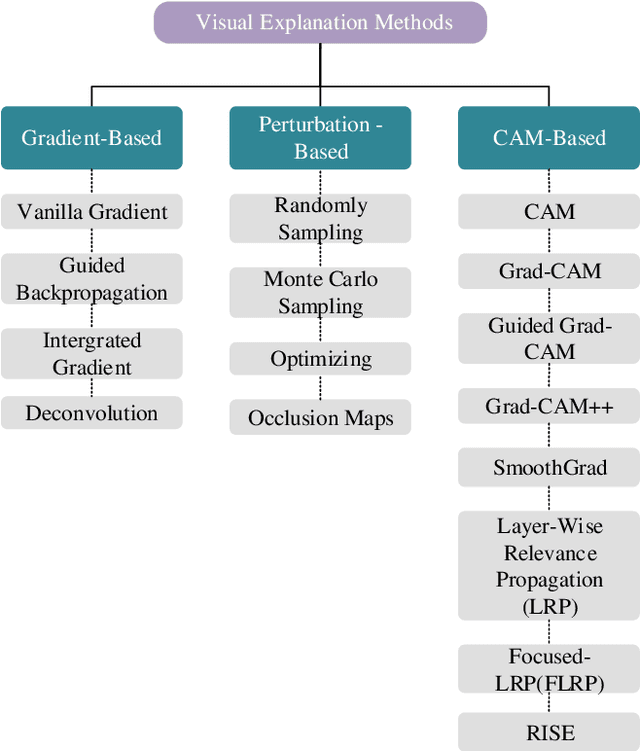

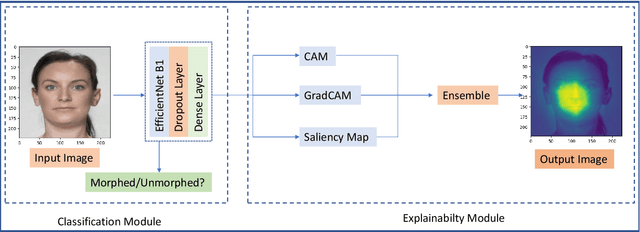
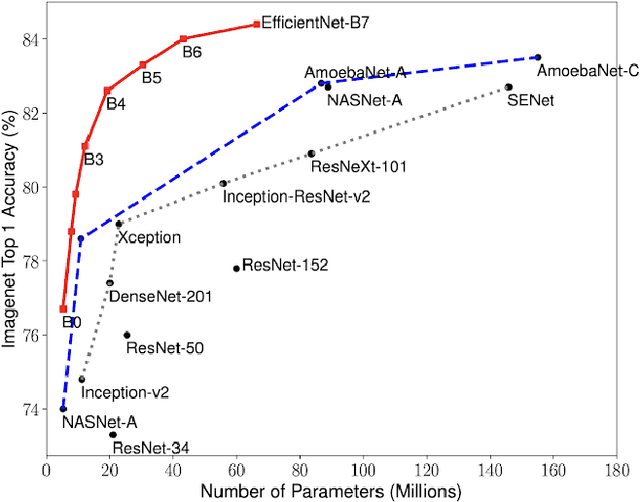
Abstract:The extensive utilization of biometric authentication systems have emanated attackers / imposters to forge user identity based on morphed images. In this attack, a synthetic image is produced and merged with genuine. Next, the resultant image is user for authentication. Numerous deep neural convolutional architectures have been proposed in literature for face Morphing Attack Detection (MADs) to prevent such attacks and lessen the risks associated with them. Although, deep learning models achieved optimal results in terms of performance, it is difficult to understand and analyse these networks since they are black box/opaque in nature. As a consequence, incorrect judgments may be made. There is, however, a dearth of literature that explains decision-making methods of black box deep learning models for biometric Presentation Attack Detection (PADs) or MADs that can aid the biometric community to have trust in deep learning-based biometric systems for identification and authentication in various security applications such as border control, criminal database establishment etc. In this work, we present a novel visual explanation approach named Ensemble XAI integrating Saliency maps, Class Activation Maps (CAM) and Gradient-CAM (Grad-CAM) to provide a more comprehensive visual explanation for a deep learning prognostic model (EfficientNet-B1) that we have employed to predict whether the input presented to a biometric authentication system is morphed or genuine. The experimentations have been performed on three publicly available datasets namely Face Research Lab London Set, Wide Multi-Channel Presentation Attack (WMCA), and Makeup Induced Face Spoofing (MIFS). The experimental evaluations affirms that the resultant visual explanations highlight more fine-grained details of image features/areas focused by EfficientNet-B1 to reach decisions along with appropriate reasoning.
Towards Designing Computer Vision-based Explainable-AI Solution: A Use Case of Livestock Mart Industry
Feb 08, 2021



Abstract:The objective of an online Mart is to match buyers and sellers, to weigh animals and to oversee their sale. A reliable pricing method can be developed by ML models that can read through historical sales data. However, when AI models suggest or recommend a price, that in itself does not reveal too much (i.e., it acts like a black box) about the qualities and the abilities of an animal. An interested buyer would like to know more about the salient features of an animal before making the right choice based on his requirements. A model capable of explaining the different factors that impact the price point is essential for the needs of the market. It can also inspire confidence in buyers and sellers about the price point offered. To achieve these objectives, we have been working with the team at MartEye, a startup based in Portershed in Galway City, Ireland. Through this paper, we report our work-in-progress research towards building a smart video analytic platform, leveraging Explainable AI techniques.
A non-invertible cancelable fingerprint template generation based on ridge feature transformation
May 28, 2018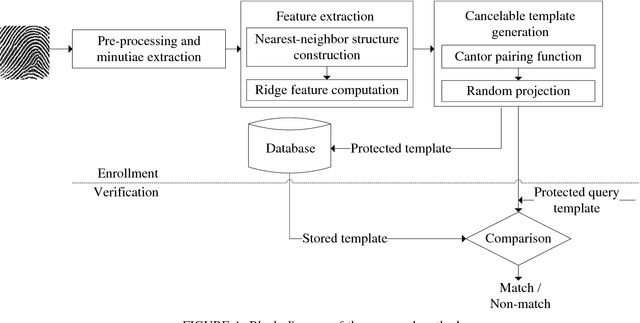
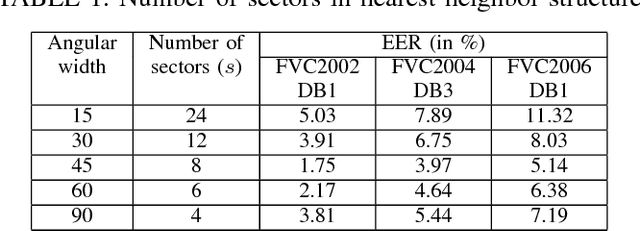
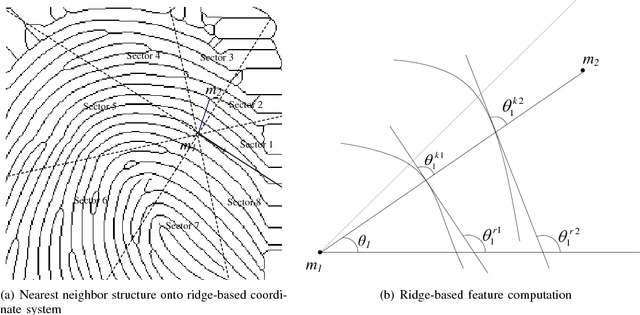
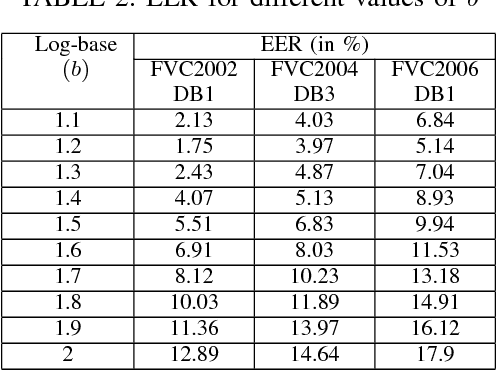
Abstract:In a biometric verification system, leakage of biometric data leads to permanent identity loss since original biometric data is inherently linked to a user. Further, various types of attacks on a biometric system may reveal the original template and utility in other applications. To address these security and privacy concerns cancelable biometric has been introduced. Cancelable biometric constructs a protected template from the original biometric template using transformation functions and performs the comparison between templates in the transformed domain. Recent approaches towards cancelable fingerprint generation either rely on aligning minutiae points with respect to singular points (core/delta) or utilize the absolute coordinate positions of minutiae points. In this paper, we propose a novel non-invertible ridge feature transformation method to protect the original fingerprint template information. The proposed method partitions the fingerprint region into a number of sectors with reference to each minutia point employing a ridge-based co-ordinate system. The nearest neighbor minutiae in each sector are identified, and ridge-based features are computed. Further, a cancelable template is generated by applying the Cantor pairing function followed by random projection. We have evaluated our method with FVC2002, FVC2004 and FVC2006 databases. It is evident from the experimental results that the proposed method outperforms existing methods in the literature. Moreover, the security analysis demonstrates that the proposed method fulfills the necessary requirements of non-invertibility, revocability, and diversity with a minor performance degradation caused due to cancelable transformation.
A novel hybrid score level and decision level fusion scheme for cancelable multi-biometric verification
May 26, 2018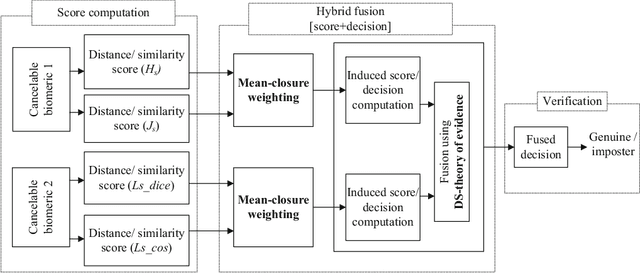
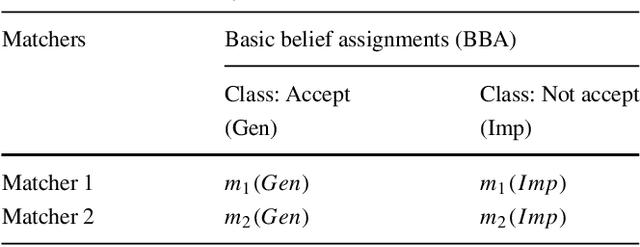
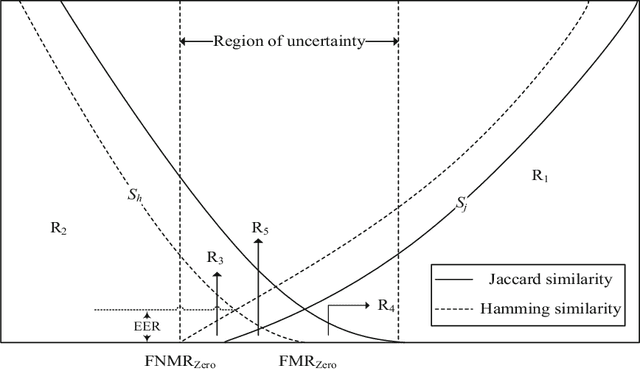
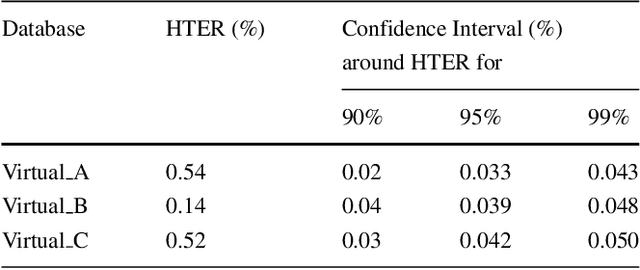
Abstract:In spite of the benefits of biometric-based authentication systems, there are few concerns raised because of the sensitivity of biometric data to outliers, low performance caused due to intra-class variations and privacy invasion caused by information leakage. To address these issues, we propose a hybrid fusion framework where only the protected modalities are combined to fulfill the requirement of secrecy and performance improvement. This paper presents a method to integrate cancelable modalities utilizing mean-closure weighting (MCW) score level and Dempster-Shafer (DS) theory based decision level fusion for iris and fingerprint to mitigate the limitations in the individual score or decision fusion mechanisms. The proposed hybrid fusion scheme incorporates the similarity scores from different matchers corresponding to each protected modality. The individual scores obtained from different matchers for each modality are combined using MCW score fusion method. The MCW technique achieves the optimal weight for each matcher involved in the score computation. Further, DS theory is applied to the induced scores to output the final decision. The rigorous experimental evaluations on three virtual databases indicate that the proposed hybrid fusion framework outperforms over the component level or individual fusion methods (score level and decision level fusion). As a result, we achieve (48%,66%), (72%,86%) and (49%,38%) of performance improvement over unimodal cancelable iris and unimodal cancelable fingerprint verification systems for Virtual_A, Virtual_B and Virtual_C databases, respectively. Also, the proposed method is robust enough to the variability of scores and outliers satisfying the requirement of secure authentication.
Generating protected fingerprint template utilizing coprime mapping transformation
May 25, 2018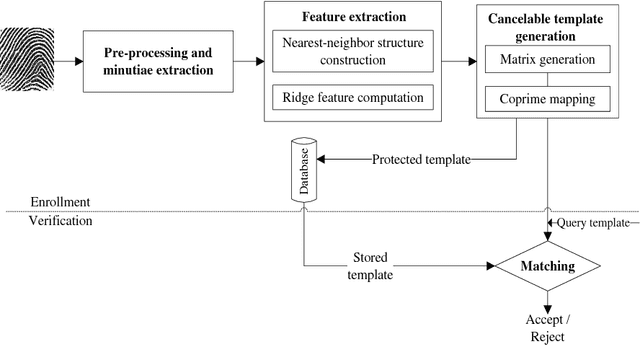



Abstract:The identity of a user is permanently lost if biometric data gets compromised since the biometric information is irreplaceable and irrevocable. To revoke and reissue a new template in place of the compromised biometric template, the idea of cancelable biometrics has been introduced. The concept behind cancelable biometric is to irreversibly transform the original biometric template and perform the comparison in the protected domain. In this paper, a coprime transformation scheme has been proposed to derive a protected fingerprint template. The method divides the fingerprint region into a number of sectors with respect to each minutiae point and identifies the nearest-neighbor minutiae in each sector. Then, ridge features for all neighboring minutiae points are computed and mapped onto co-prime positions of a random matrix to generate the cancelable template. The proposed approach achieves an EER of 1.82, 1.39, 4.02 and 5.77 on DB1, DB2, DB3 and DB4 datasets of the FVC2002 and an EER of 8.70, 7.95, 5.23 and 4.87 on DB1, DB2, DB3 and DB4 datasets of FVC2004 databases, respectively. Experimental evaluations indicate that the method outperforms in comparison to the current state-of-the-art. Moreover, it has been confirmed from the security analysis that the proposed method fulfills the desired characteristics of diversity, revocability, and non-invertibility with a minor performance degradation caused by the transformation.
 Add to Chrome
Add to Chrome Add to Firefox
Add to Firefox Add to Edge
Add to Edge